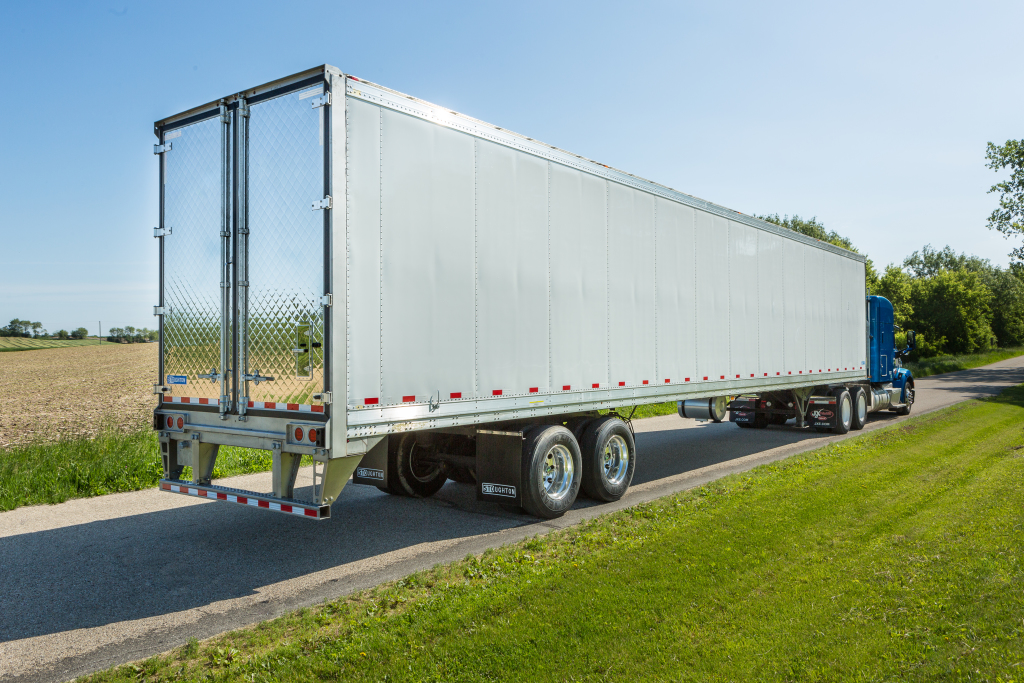
New York is moving forward with a plan to stop trucks from crashing into the low railroad bridge over Onondaga Lake Parkway that state officials admit is a big bet on a solution that might not work.
By the end of fall, the state will reduce a section of the parkway from two to one lane in each direction. It’s part of a renewed effort, at a cost of $1.2 million, to stop tractor-trailers from crashing into the 152-year-old bridge.
The state also will cut the road’s speed limit from 55 mph to 45 mph and extend a shutdown of the Interstate 81 North exit ramp to the parkway.
The controversial changes have left some wondering whether it’s worth dramatically altering one of the busiest commuter routes from Syracuse’s suburbs – used by an average of 22,000 vehicles per day – to prevent a few truck accidents per year.
State Department of Transportation officials say they are compelled to act for public safety, especially after a record surge of big rigs crashed into the bridge in the first few months of the year.
The DOT’s chief engineer and regional director in Syracuse say the state’s plan is part of a build-and-measure approach that they’re confident will stop the spike of truck crashes into the CSX railroad bridge.
If the initial changes don’t work, the state can change course. DOT officials have not ruled out the most expensive solution – raising and replacing the railroad bridge at taxpayer expense. The project would cost tens of millions of dollars and is viewed as a measure of last resort.
“What we’re doing in the short-term is not irreversible,” said David Smith, the DOT’s regional director. “We need to have some time to evaluate the opportunities for those permanent solutions.”
DOT officials acknowledge they did not consult with parkway commuters or truck drivers about their short-term plan, nor does the state intend to hold public hearings about the changes.
Others are skeptical that the state’s decision to lower speeds and merge traffic to one lane on the approaches to the railroad bridge will make a difference.
The village of Liverpool is taking matters into its own hands. The village board, fed up with the bridge crashes and a rise in truck traffic, voted last month to ban all large trucks from its streets.
A former top official at the U.S. Department of Transportation said she doesn’t see the logic behind the state’s decision to slow and merge traffic on the parkway, which has been off-limits to tractor-trailers for decades.
Beth Osborne, now director of Transportation for America, a group that advocates for safe and affordable transportation, said New York officials deserve credit for trying to come up with new ideas to solve an old problem.
But Osborne said she’s skeptical that forcing traffic to merge into one lane will stop truckers from mistakenly driving onto the parkway and striking the bridge.
“I’m not aware of something like this working,” Osborne told syracuse.com | The Post-Standard. “This is something I find very frustrating about our approach to transportation design right now. We expect the driver to make decisions in areas that are unfamiliar at a second’s notice.”
State officials said they decided to make the short-term changes based on an examination of similar New York parkways. They found parkways fed by high-speed traffic from interstate highways like I-81 in Syracuse have a higher incidence of trucks hitting low bridges.
The DOT did not provide syracuse.com | The Post-Standard with details of their analysis despite repeated requests for the information.
Nick Choubah, the DOT’s chief engineer and assistant commissioner, said the goal of the state’s plan is to reduce the speed of traffic on the parkway, giving truck drivers more time to focus and see the nearly 50 signs and countermeasures installed to get their attention.
The signs warn that all trucks and commercial vehicles are banned from the parkway because of the 10-foot, 9-inch railroad bridge. The bridge was originally built over the Oswego Canal before it was filled in and turned into a road along the shores of Onondaga Lake.
The DOT’s analysis found that by reducing the parkway speed limit from 55 mph to 45 mph, drivers will have 24% more time to read the warning signs. That’s an extra 1.6 seconds.
In addition, by forcing traffic to merge into one lane for 1,200 feet on either side of the bridge, truck drivers who mistakenly enter the parkway will be forced to focus more on the warning signs and flashing lights, Choubah said.
Osborne, the former federal transportation official, said traffic would probably have to slow down for an extra 20 to 30 seconds to effectively draw more attention to the warning signs.
This summer, the state finished installing new warning signs with graphics instead of words to inform drivers with limited English skills that trucks are banned on the parkway.
Even if the warnings don’t work and a truck hits the bridge, Choubah said, the impact would be less likely to cause a catastrophic accident like the 2010 crash of a double-decker Megabus crash that killed four people.
DOT engineers calculated that a tractor-trailer striking the bridge at 45 mph would hit with 66% of the force of a truck traveling at 55 mph.
Choubah said the state wants to keep the I-81 North ramp (Exit 24B) to the parkway closed, at least until the lane changes and lower speeds go into effect. The exit ramp was initially closed in April for bridge deck and joint repairs.
“Historically, at least in the state, in areas where there is a parkway next to an interstate our experience shows that there is a greater potential for a bridge hit,” Choubah said.
He did not provide any data to support his claim.
Choubah noted that no tractor-trailers have crashed into the bridge since the I-81 ramp closed in April. Before then, six trucks had hit the bridge this year, on pace to set an annual record on the parkway.
A review of state records shows the Interstate 81 off-ramp isn’t the biggest source of trucks that crashed into the Onondaga Lake Parkway bridge.
Local traffic from Liverpool appears to pose as much of a threat of a bridge strike as traffic coming off Interstate 81 from Syracuse.
Since 2011, the number of trucks that crashed into the bridge is almost evenly divided between those that were traveling westbound from the I-81 ramp and Park Street in Syracuse (23) and eastbound from Liverpool (26), according to DOT data.
The data also shows that in most years since 2011 almost twice as many trucks coming from Liverpool, rather than Syracuse, set off the parkway’s early-warning system for over-height vehicles. Most of those trucks turned around before hitting the bridge.
Last year, 1,037 eastbound vehicles from Liverpool triggered the warning system compared to 465 westbound vehicles from Syracuse, according to the state’s data.
The 1,037 trucks that mistakenly turned onto the parkway from Liverpool was the highest on record since the state installed its over-height vehicle detection system.
Some elected officials blame the increase on the opening of a $350 million Amazon distribution center just outside of Liverpool on Morgan Road.
Liverpool Mayor Stacy Finney said that’s one reason the village board voted unanimously last month to pass a local law banning all tractor-trailers or trucks weighing more than 5 tons from using local roads. The only exceptions would be for trucks making local deliveries.
State transportation officials say at least three trucks from the Amazon distribution center struck the bridge over the past year.
Smith, the DOT’s regional director in Syracuse, said officials believe a reason for this year’s surge in bridge strikes was a problem with out-of-town truck drivers. Some of those drivers relied on personal GPS systems on their cell phones that are meant for car drivers.
Commercial GPS systems for trucks drivers, including those used by Amazon drivers, show Onondaga Lake Parkway is off-limits to trucks.
The DOT did not provide any data showing how many of the bridge strikes were related to the GPS problem.
Smith said state officials talked with Amazon and other companies, asking them to address the GPS issue with their drivers. But he said the ultimate solution would have to come from federal officials who regulate interstate commerce.
Nick Paro, the Salina supervisor, said he personally flagged down a tractor-trailer driver earlier this year who missed the warning signs and traveled onto the parkway. He said the driver held up his personal phone, saying his GPS suggested the route.
Paro said he’s frustrated with the state, which didn’t consult him about its latest plans. He said he doesn’t believe the state’s plan to slow traffic will work.
In his view, the problem could be solved if the state moved up the timeline for one simple change – installing emergency traffic lights just before the bridge in both directions.
The red lights would be activated only if a tractor-trailer or other over-height vehicle sets off the state’s system of sensors designed to warn trucks to stay off the parkway.
“I was hopeful that the stoplight was going to solve the problem,” Paro said. “That, in my opinion, is the best solution. Now it seems like the state is completely backpedaling on all of this.”
State transportation officials said that the traffic lights – part of planned safety changes announced by the DOT commissioner last month – would be installed in a future phase, perhaps 14 to 18 months from now.
Choubah, the DOT’s chief engineer, said the state wants to evaluate the short-term measures first. He said there’s no guarantee those changes will work.
He said the permanent solutions could involve changing the length of Onondaga Lake Parkway to a route with one lane in each direction – instead of two – between Liverpool and Syracuse, just north of Destiny USA.
Under that plan, the state would likely install a concrete median to separate oncoming traffic and help prevent collisions.
The state initially proposed that idea in 2019 as part of an $8.6 million plan to improve safety on the parkway. The idea landed with a thud when Liverpool residents said it made no sense.
During a 90-minute public hearing in 2019 that attracted more than 100 people to Liverpool, nobody spoke in favor of the state’s plan.
Now the state has at least two influential elected officials who say they support the idea of a single-lane parkway in each direction.
Onondaga County Executive Ryan McMahon and Finney, the Liverpool mayor, agree that the single lane will improve the overall safety of the parkway. The two said they think the lower speed will force truck drivers to focus and pay attention to the warning signs about the low bridge.
But the DOT has put the idea of permanently converting the entire parkway to a single-lane road on hold.
Smith said the DOT won’t consider the idea again until Old Liverpool Road, an alternative commuter route with traffic lights, is expanded to handle more traffic. About 12,500 to 15,700 commuters per day use the road.
McMahon said the county plans to move forward next year with a project to add a center turning lane to Old Liverpool Road. The new lane would extend from School Road to Electronics Parkway in the town of Salina.
The lane would be used for left turns, eliminating existing traffic backups at traffic lights.
Related
Liverpool declares war on big trucks, sending rigs from Amazon and others around crowded village
Onondaga Lake Parkway drivers to take less of a hit under state’s revised plan
NY’s fix for Onondaga Lake Parkway truck-bridge crashes will change daily trips for thousands
State to reduce lanes on parkway in new attempt to keep trucks from hitting low bridge
NY is open to replacing Onondaga Lake Parkway’s low railroad bridge after record run of crashes
Got a tip, comment or story idea? Contact Mark Weiner anytime by: Email | Twitter | Facebook | 571-970-3751
Credit: Source link













